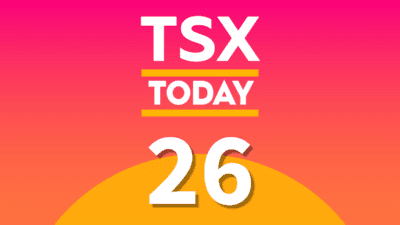Ever wonder how Warren Buffett identifies a wonderful business?
It’s a question regular investors ask all of the time. Get it right, and you enjoy a steady stream of dividends and returns for decades to come. Get it wrong, and watch helplessly as your investment dollars disappear.
Sure, you could dig through every financial statement, read every trade magazine, and listen to every conference call. But eventually all of the numbers and facts start to blur together. How are you supposed to figure this stuff out? Why can’t great investments just come with a label?
You’d think it would be impossible, but it’s not. You just have to take a page out of Buffett’s playbook.
Introducing the ‘economic moat’
The single wealth-building trait Buffett looks for in every stock is an economic moat. As the Oracle himself explains…
“A truly great business must have an enduring “moat” that protects excellent returns on invested capital. The dynamics of capitalism guarantee that competitors will repeatedly assault any business ‘castle’ that is earning high returns…. Therefore a formidable barrier such as a company’s being the low-cost producer or possessing a powerful world-wide brand is essential for sustained success. Business history is filled with ‘Roman Candles,’ companies whose moats proved illusory and were soon crossed.”
Economic moats defend a business from competition. That helps the company with a moat earn excess returns on capital and pay out steady dividends to shareholders for year after year.
Of course, moats aren’t listed on an income statement or a balance sheet. But the most common ones are easy enough to spot.
1. Intangible assets such as patents, brand names, and trademarks can shut out competition and protect a company’s profits. Tim Horton’s (TSX: THI)(NYSE: THI) is a great example of this. The company is one of the most dominant coffee chains in the country. Much of its advantage comes from its recognized brand name. That’s why even though there are literally hundreds of rivals, Tim Horton’s is still able to dominate its competition selling almost exactly the same product.
2. High switching costs: Switching costs are those one-time expenses or inconveniences you incur to switch from one product to another. A Thomson Reuters (TSX: TRI)(NYSE: TRI) terminal is critical piece of equipment in the securities industry. Once a financial institution has purchased the product, it quickly becomes ingrained within the company’s operations and businesses processes. Thanks to the high cost to switch to a competing supplier, this keeps customers loyal to Thomson.
3. Low-cost provider: A business that can supply the same product for a lower price can essentially shut any rival out of a market. This is the reason behind Amazon’s success over the past decade.
4. The network effect occurs when the value of a product or services increases the more people use it. How has Facebook come to dominate social media? Now that over a billion people have signed up, there’s no other social networking site that can rival Facebook’s popularity.
Examples of economic moats
Investors who underestimate the importance of moats can miss big opportunities or expose themselves to unexpected losses. Let me give you two examples.
Enbridge (TSX: ENB)(NYSE: ENB) is a remarkable Canadian success story. The company has paid a dividend to shareholders for 60 consecutive years. And over the past decade, the company has increased its dividend at a 12% annual clip. If you had held the stock through that period, the yield on your original investment would be almost 12% today.
But how — especially in a volatile sector like the energy industry — has Enbridge been able to sustain such success? It’s because the company’s pipeline network is almost impossible to replicate. Any new projects would need the the buyout of every landowner along the proposed path and be subject to an expensive regulatory approval process. This creates a nearly impenetrable barrier to competition.
In contrast, the decline of BlackBerry (TSX: BB)(NASDAQ: BBRY) illustrates the dangers of buying a fragile moat.
What was BlackBerry’s competitive advantage? It was the first company to put email on a mobile phone; in essence inventing the smartphone. By being the first mover within a emerging industry, the company was able to make money hand over fist.
Then other companies copied it and technological innovations chipped away at BlackBerry’s profits. Reinventing a consumer gadget isn’t actually that hard. It happens every few years. If a technology company isn’t constantly innovating, it will be left behind.
The differences in returns for shareholders have been dramatic. Over the past decade, Enbridge has delivered a 260% gain excluding dividends. BlackBerry investors, in contrast, have lost over 60% of their investment.
Foolish bottom line
Now, investing in a wide-moat business is no assurance that a stock will be a winner. If you overpay for future earnings, a company will never be able to outperform regardless of the fundamentals. But if the world’s greatest investor has made his billions by investing in economic moats, shouldn’t you?







